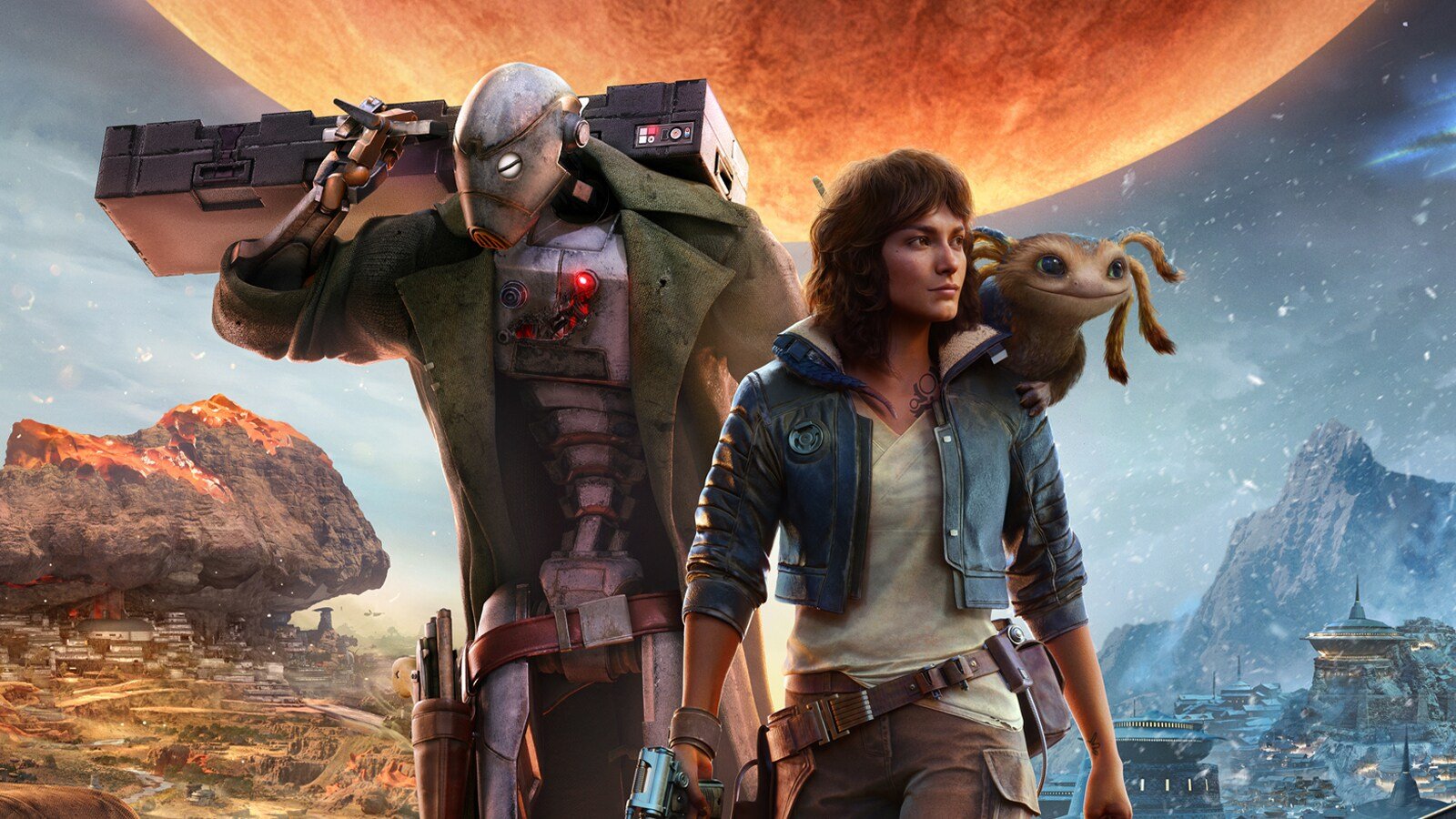‘The Matrix Resurrections’ Review: Rage Against the (Studio) Machine
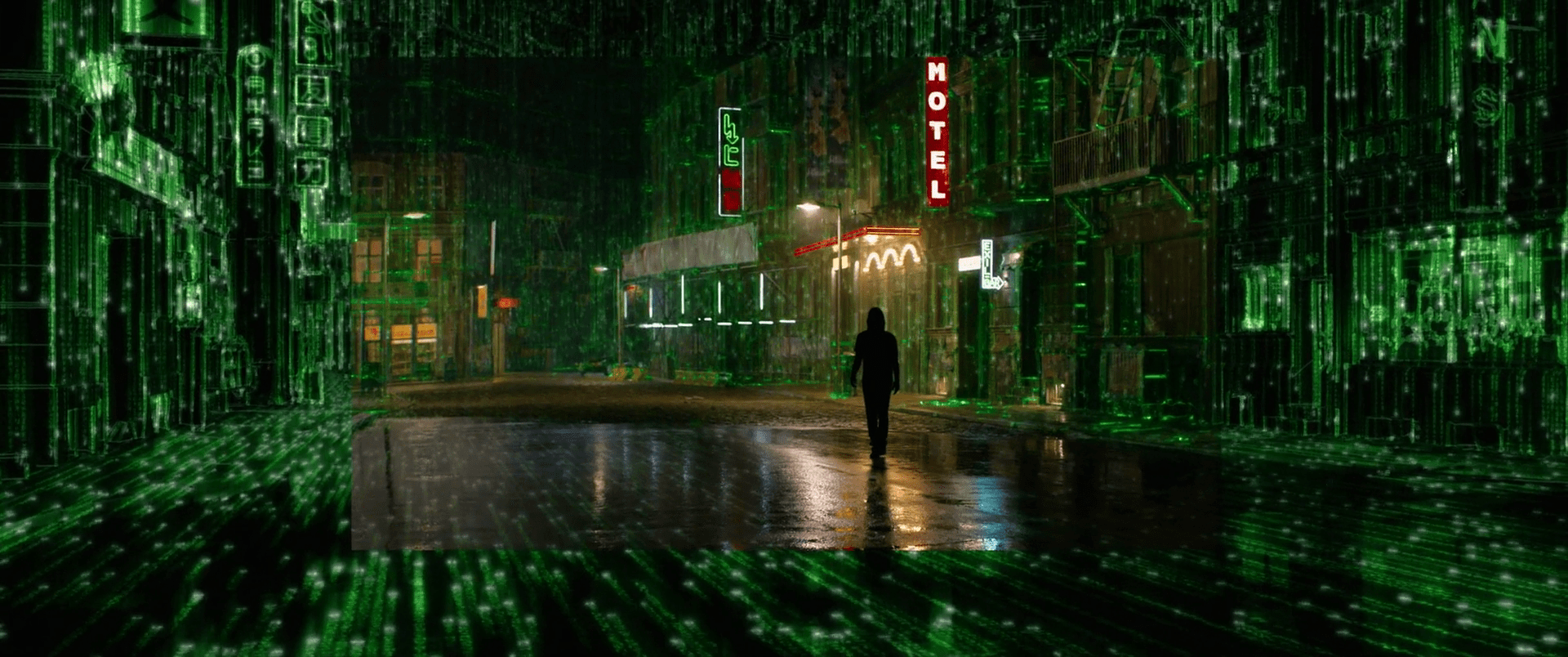
The Matrix Resurrections has been out, both in theaters and on HBO Max, for a week now, and it’s caused an unsurprising amount of discourse.
I think I’m in the majority when I say a fourth Matrix was bound to be divisive. Yes, audiences are accustomed nowadays to having very strong (good and bad) opinions about every revival of a famous IP that comes out, but the thing with Matrix is the two original sequels already caused an uproar that hadn’t died down in nearly two decades. Of course, now that a fourth installment is out, they’ll quickly become “not as bad as I’ve been saying for nearly twenty years” in many cases. That’s just how the discourse works. Old thing always better than new thing.
In more than one way, The Matrix Resurrections, helmed by Lana Wachowski alone this time around, is fully aware of what the conversation around The Matrix and legendary film franchises in general has been over the past few years. Hollywood has spent an egregious amount of time and resources resurrecting dormant IPs and course-correcting franchises that maybe hadn’t evolved as well as they could over the years. And “nostalgia” is the key word here — feeling better about new stories because they remind us of and/or continue the classic old tales we all love. “Remember when blockbusters were generally good?” Well, it turns out we tend to only remember the good ones, obviously. But we’ve been sold time and again the illusion that old times always equal better times.
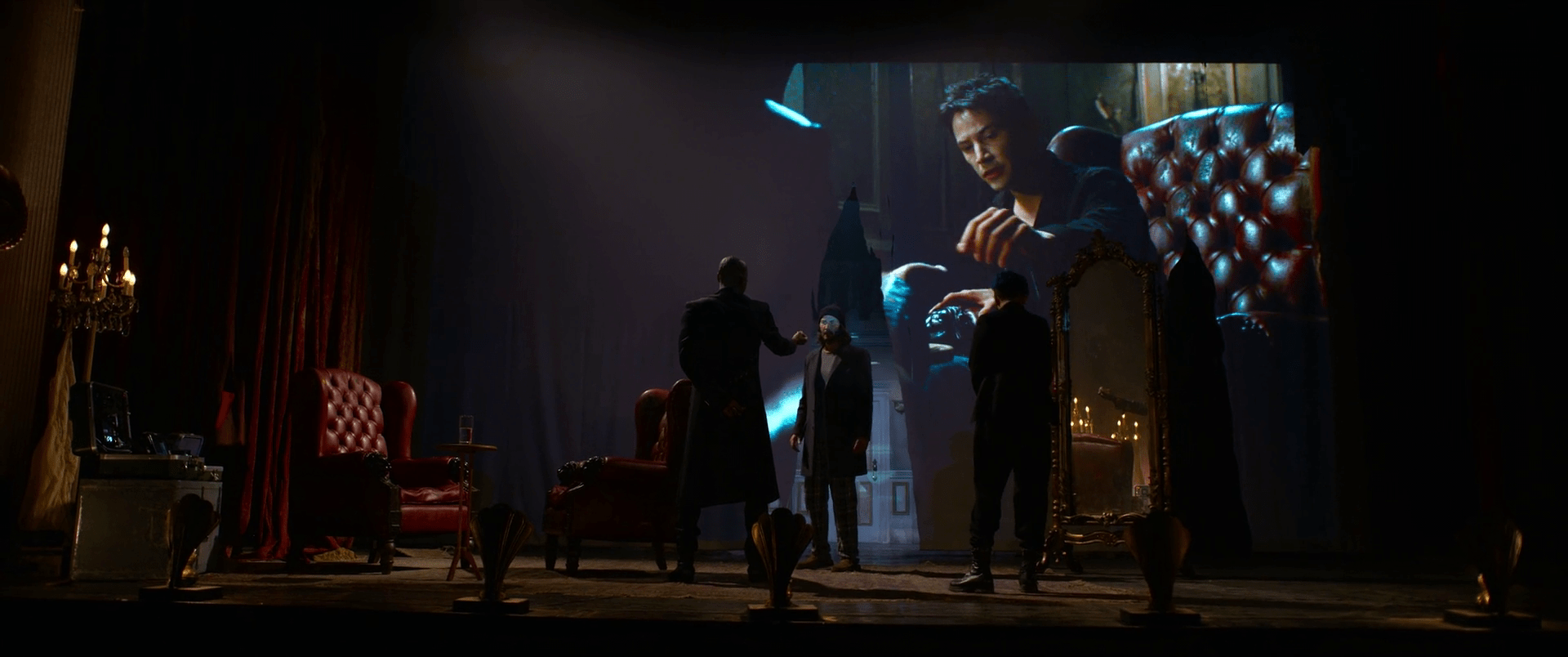
It feels oddly fitting to have The Matrix Resurrections playing in theaters at the same time as Spider-Man: No Way Home, a film which uses nostalgia and the filmic past of the character to propel forward the newest iteration of Peter Parker — in my humble opinion, it’s a smart take on the well-loved past of the franchise, and successfully balances out “good ol’ feels” by actually telling a compelling story that stands on its own. If No Way Home lives somewhere in the middle of the “nostalgic sequels” spectrum, the fourth Matrix lives at one of the extremes and throws the rulebook out of the window. Some folks are having a hard time grasping this, but Resurrections very clearly wants to talk about how we all see Matrix two decades later rather than about Matrix itself. It’s not here to resurrect the franchise, but to give everyone (inside and outside the story) proper closure after an underwhelming conclusion back in 2003.
Spoilers ahead.
Lana Wachowski’s intentions are made abundantly clear from the get-go: we revisit the very first Matrix with some odd changes, but it’s a video game about the original Matrix trilogy… being developed by Thomas Anderson (Neo). Things get very meta very quickly, but the in-universe mechanics quickly take care of the audience’s questions. This choice doesn’t nullify the previous films. Furthermore, it serves two big purposes: to let us know the rabbit hole goes deeper this time around (in a new iteration of the Matrix), and to make the most unsubtle commentary ever on how both studios and fans want the same thing but repackaged. In a way, the first half of Resurrections is like a twisted, wackier expansion of the first 30 minutes of the original film, and it’s quite a lot to take in at first. Not because it’s complicated, but because the fourth wall is broken so many times that it’s easy to feel disconnected from the fiction within a fiction, which is meta enough already. It’s also easy to understand why some people simply wanted a straightforward Matrix 4 that focused on the war against the machines and came up with an extension of the “hero’s journey” of Neo. But Resurrections isn’t that film, although it does answer many post-Revolutions questions and sets up a new stage for the universe.
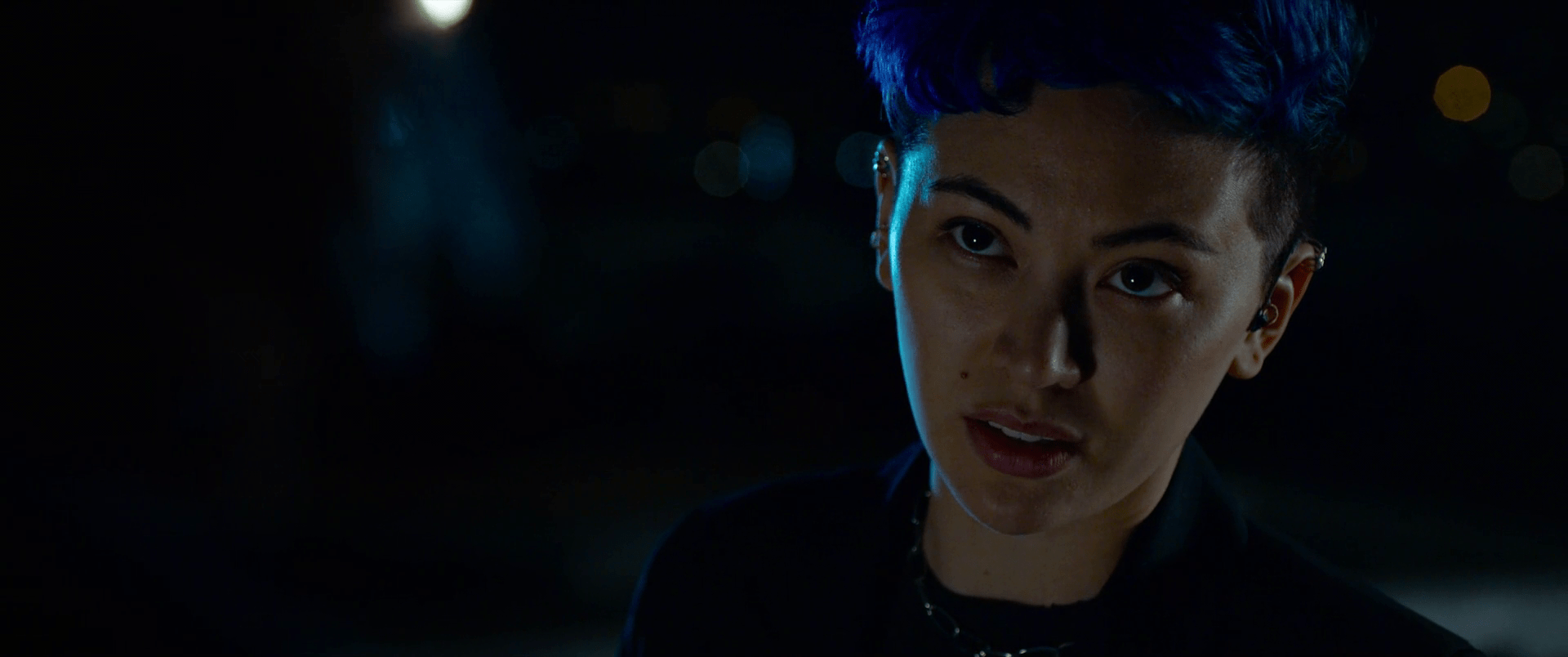
I must say the marketing team did a great job of selling the film without revealing what the hell it’s about. The funny thing is that, despite its out-of-the-box philosophy and lack of concern for what the diehard fans were asking for, Resurrections fully respects its predecessors and doesn’t walk back any decisions — Neo and Trinity died, and their deaths had an impact on everyone, including the machines. The war hasn’t ended, but the dynamics between humans and machines have evolved, and there’s room for understanding. Lana Wachowski actively deflects the possibility of a clear-cut “the good guys have won” ending, and instead brings back the main characters from the dead (thanks to the in-universe possibilities) to give them a second chance and to make them tear down another sad, oppressive system disguised as “more human.” Much like in our real world, the powers that be will forever try to censor and domesticate the little guy in new ways, but “anomalies” are inevitable and can bring about slow but steady change.
In one of the film’s biggest twists, Neil Patrick Harris’ character, the Analyst, is established as the mastermind behind this new version of the Matrix. Unsurprisingly for those who have followed him since Starship Troopers, he plays the “manipulative asshole” part exquisitely. Yes, Smith’s code is still around under a new guise, but he’s more of a wildcard in this, and Jonathan Groff gets to have tons of goofy fun riffing on Hugo Weaving’s performance while bringing a new kind of “douchey” energy to the rebooted character. Another “newcomer” standout performance comes from Jessica Henwick, who has a larger presence in the film than anyone anticipated — she’s been underrated for years, and hopefully this will bring more attention to her. She’s surrounded by a rather big Sense8 reunion that made me smile more than once, too.
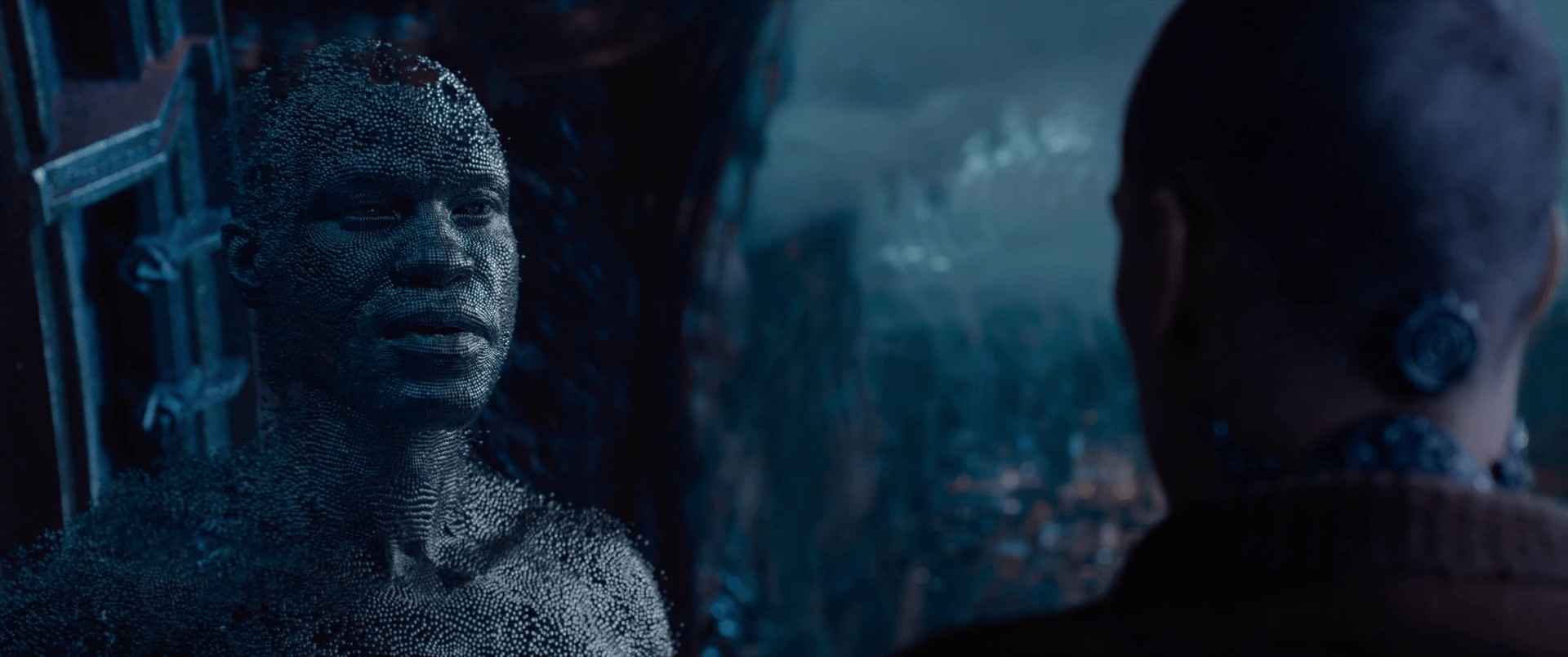
Yahya Abdul-Mateen II probably landed the weirdest role in the film, but he seems to be fully aware of how crazy the situation is at all times — he plays a “new version” of Morpheus that was programmed by “new-Matrix” Neo and put into his OG Matrix trilogy video game. Since all of that comes from Neo’s real past-life memories, this Morpheus has plenty of the old one despite the all-new code. Bugs (Jessica Henwick) takes him out of the video game, but he can’t leave the Matrix layer, as he’s only digital. The writers found an incredible workaround (that pays off later) though, and it’s easily one of the coolest new sci-fi concepts introduced. While the focus is put on Neo and Trinity’s relationship, the worldbuilding is expanded in a variety of ways, and the secondary returning faces occupy new roles that feel fitting and serve the story, instead of the other way around. By the way, this is no longer Neo’s story; a seasoned Keanu Reeves gets to share the film’s weight as events unfold and gives space to Carrie-Anne Moss, who arguably has the coolest moments in the film.
For a film that often appears to be overcrowded, The Matrix Resurrections moves at a remarkably steady pace. I’ve never had much trouble in this regard with the Wachowskis’ filmography, not even while watching Jupiter Ascending (a colossal but gorgeous misfire), but I’m glad to see the fourthquel avoided being too enamored with itself. We could make a case that the film can be trimmed down 20 minutes or so, as some scenes go on for too long without any real benefits, but it never feels bloated or self-indulgent even when it gets extremely meta and starts taking shots at the very studio system that greenlighted it.
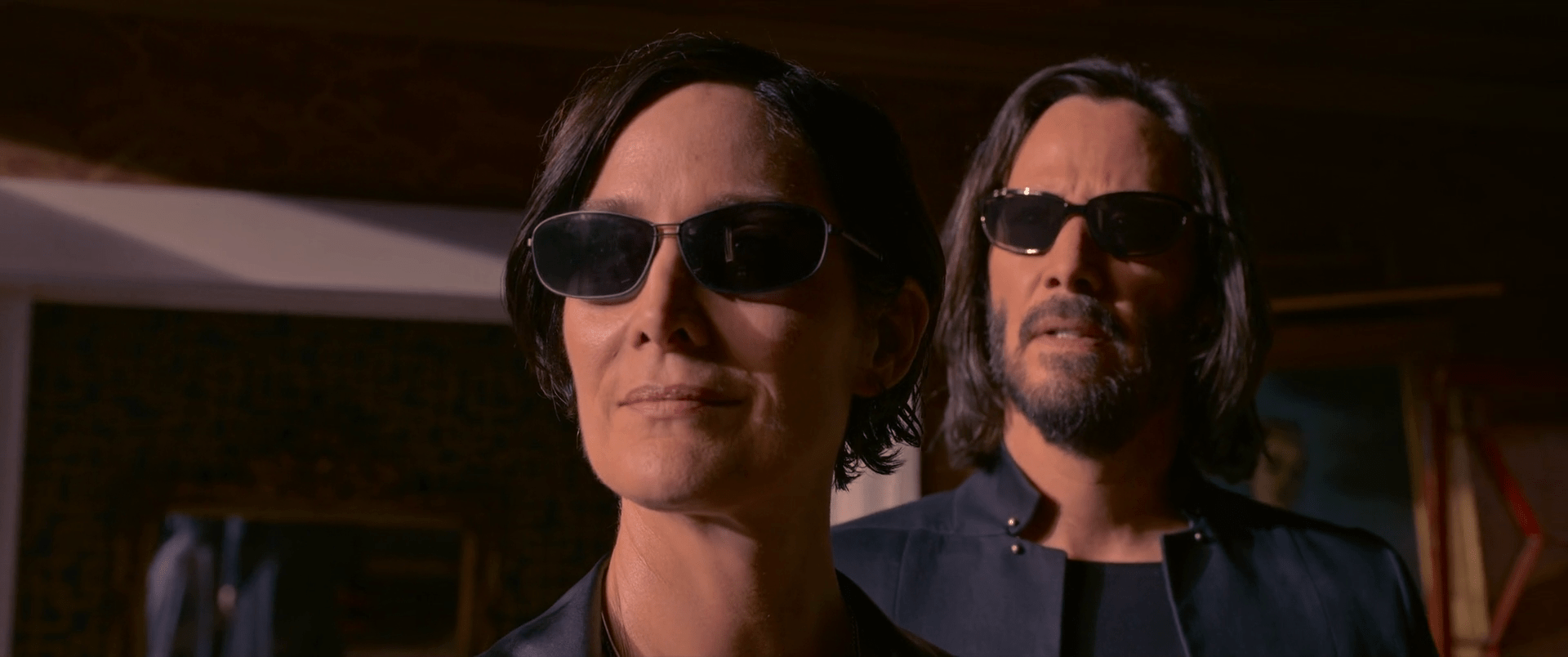
The biggest break from the original trilogy comes from the overall aesthetics. Yes, sunglasses plus longcoat combos remain cool and undefeated, but long gone are the in-Matrix green tint (only makes a brief comeback), Bill Pope’s super dynamic cinematography, and Don Davis’ iconic score (replaced by Johnny Klimek and Tom Tykwer). It’s a conscious and well-calculated decision that fits the new version of the (in-universe) Matrix and also gives Resurrections a different audiovisual identity. As a result, the film feels warmer and more optimistic than its predecessors, which is what the script is undoubtedly going for. Most of its action sequences, while always fun, are rather mundane though — it’s a shame they weren’t pushed as hard as other parts of the package.
All in all, The Matrix Resurrections feels more like an epilogue than a new beginning for the franchise. Of course, it’s open-ended enough, and the universe’s possibilities are literally endless, yet Lana Wachowski and her producers have stated this is it for Neo and Trinity. Maybe other filmmakers will come in and try their luck with the IP, but Resurrections is a heartfelt sendoff that doesn’t want to spend time worrying about a magical resolution to a complicated conflict. This was always about love, compassion, and making the conscious choice to break free and become the hero of the story. We can spend many hours dissecting details and in-universe mechanics, or looking for a definitive conclusion to the human-machine war, but I wouldn’t have wanted a Matrix 4 any less ballsy than the one we’ve received. I’ll gladly take this imperfect miracle, thanks.
As Neo and Trinity, now two god-like figures in the Matrix, fly up in the orange sky and a cover of RATM’s ‘Wake Up’ kicks in, Lana Wachowski shamelessly merges her biggest success (The Matrix) with her biggest failure (Jupiter Ascending) while letting go of those she’s lost. “Love is the genesis of everything.”
P.S. – Stay until the end of the credits if you want a final middle finger.
Francisco J. Ruiz is that guy who has watched Jurassic Park a thousand times and loves Star Wars. His hunger for movies is only matched by his love for video games. He graduated in English Studies from the University of Malaga, in Spain. As he keeps writing about what he enjoys (and doesn’t) for websites all over, he’s continuing his studies.


